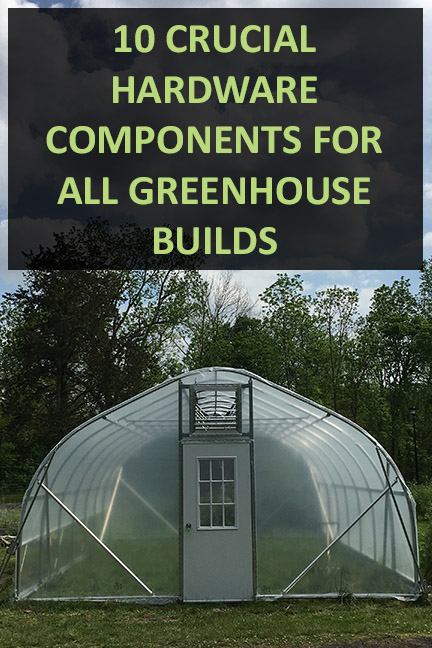10 Crucial Hardware Components for Greenhouse Builds | DIY High Tunnel Construction
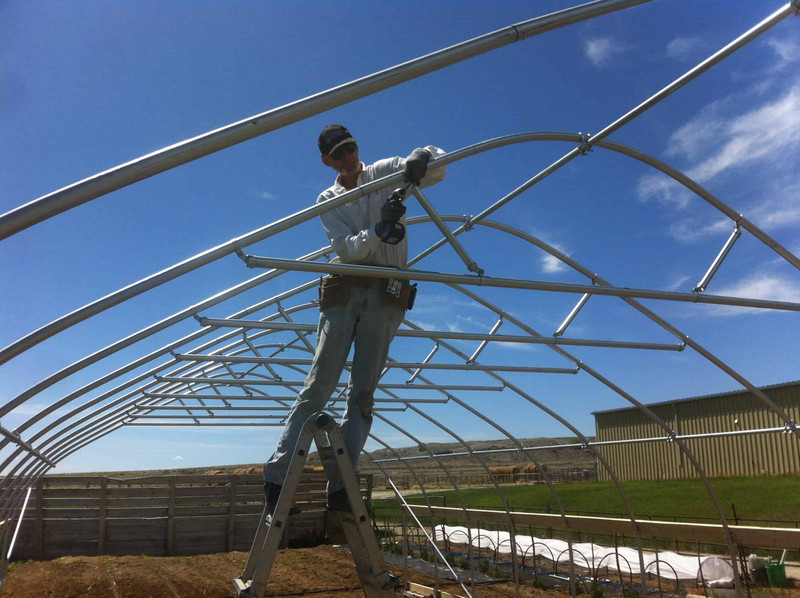
There are many hardware components required to construct a high tunnel or greenhouse. Some are absolutely essential. In this post, we provide a list of the 10 most essential hardware components required when building a high tunnel, hoop house, or greenhouse.
Whether you plan to buy an all-inclusive High Tunnel DIY Kit, or want to fabricate your own structure, knowing what materials you'll need is important.
The Ten Most Crucial Hardware Components for Greenhouse Builds Are...
We go into much more detail on all of these hardware components throughout this post, but if you're in a hurry, here is a quick rundown:
- Self Tapping TEK Screws: Used to attach metal to metal.
- Brace Bands: Used to attach a flat tube to a round bow.
- Cross Connectors: Also referred to as "purlin clamps" - used to attach two tubes crossing perpendicularly.
- Lock-ups: An older piece of hardware used to attach two tubes crossing perpendicularly.
- Two-Hole Straps: Used to attach hip-rails, baseboards, and center purlins.
- Greenhouse Plastic Attachment: The main way you will attach greenhouse plastic.
- Lumber End-Wall Brackets or Steel End-Wall Brackets: Used for end-wall construction.
- Greenhouse Plastic: The main way you'll protect your crops.
- Inflation Fan for Greenhouse Plastic: If you want to insulate two layers of plastic.
- Roll-up Side Hardware: Hardware you'll need to naturally ventilate through your sides.
While the list above provides you with a snap shot of the most crucial hardware components for building a high tunnel or greenhouse, the rest of this post provides a TON of detail as to the different times you might use any of the above.
Video on 10 Crucial DIY Greenhouse Building Components
We go into much more detail further on in this post, but we also have a video showing all of our favorite DIY Greenhouse Building components. Check out this video first to get visuals of how each fitting is used:
1. Self Tapping TEK Screws
All High Tunnels comprised of metal framework will require self tapping (self drilling) TEK Screws.
These screws are designed with sharp drill bit like tips that allow you to screw directly into metal. Essentially, TEK Screws are what will allow you to easily connect metal to metal. You will use TEK Screws to attach bows/hoops together, to attach hoops to your ground posts, attach runs of purlin together, and more.
There are three main types of TEK Screws you will want to have on hand for a greenhouse build, and we outline them each below.
When Screws Come in Contact with Plastic
When you attach a piece of metal to another piece of metal with a TEK screw, and it is in a location where the screw may come in contact with your greenhouse plastic you will want to use a Pan Head TEK Screw. This means that the head is going to be more rounded, and will thus not cause as much friction with the greenhouse plastic.
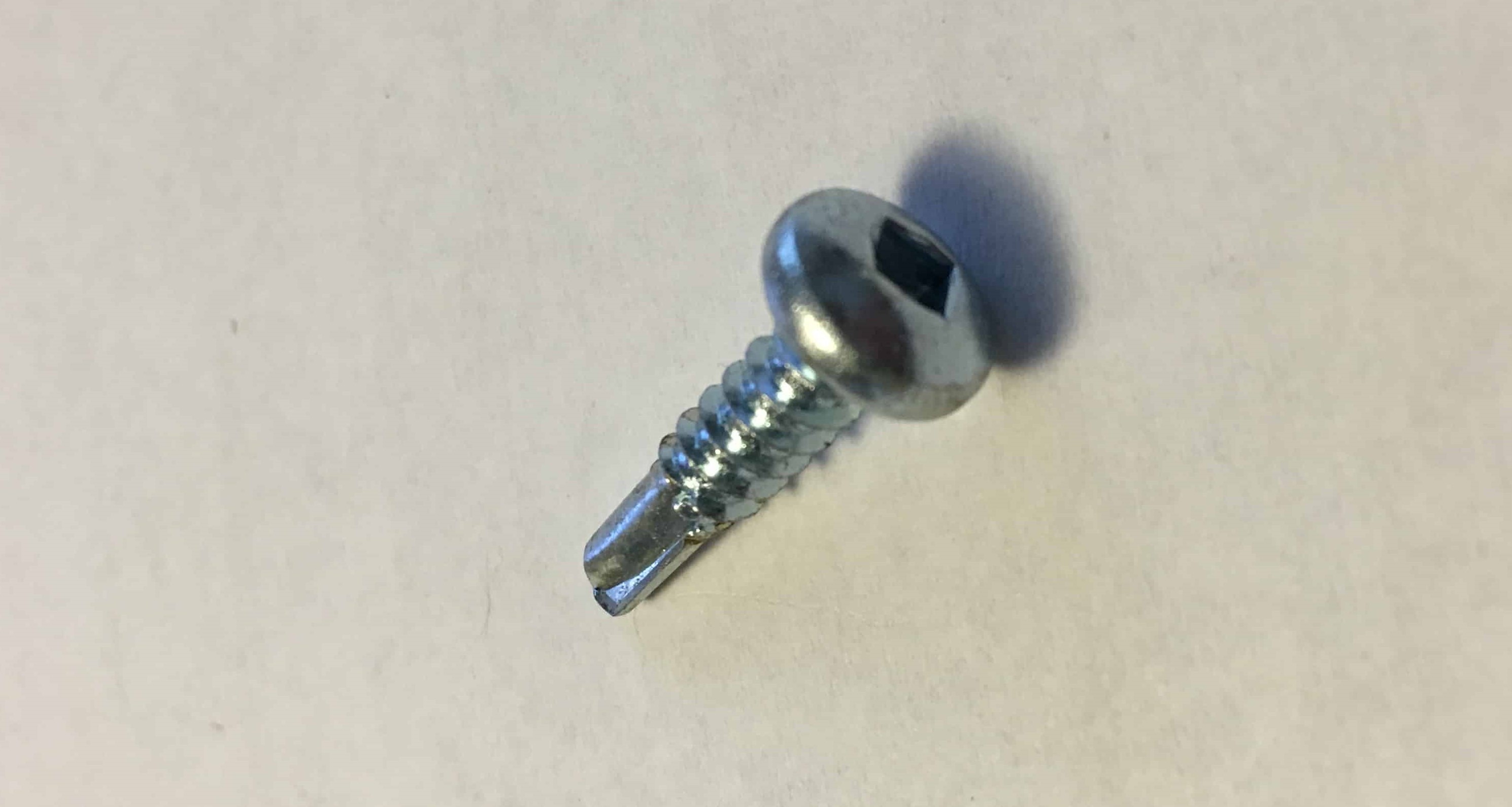
For example, Pan Head TEK Screws are the screws you would use to connect your roll-up side pipes to each other. Since the roll-up side plastic makes contact with these screws it is better if they have rounded smooth edges.
For Structural Connections
Our favorite TEK screw for making structural connections are 3/8'' Drive 1'' Long TEK Screws. Technically, any of the TEK Screws would create a firm connection for your structure, but there is no doubt that the larger and longer TEK Screws can make more of a bite when connecting the major structural features.
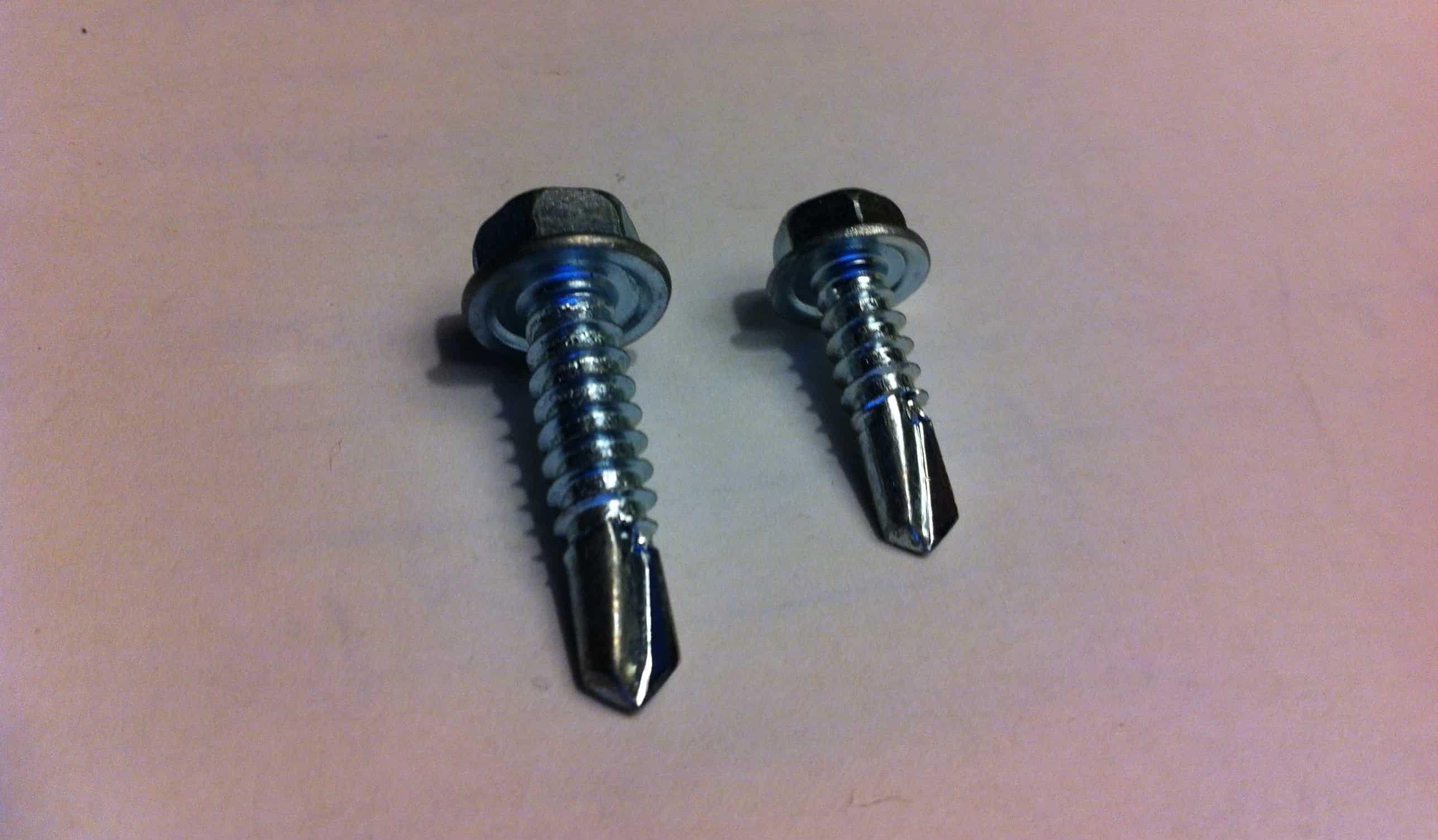
These TEK Screws have Hex Head drives which is great because Hex Heads are easier for drill drivers to grab on to, and are ultimately easier for you to screw into place. Specifically these TEKS are great for assembling bows/hoops, or attaching bows/hoops to ground posts.
To Attach Single and Double Channel
For any project using Single Aluminum Channeland Spring Wire as the preferred method for attaching greenhouse plastic, you will need to have a screw for attaching it.
The best screw to use for attaching aluminum channel to metal framing is a 5/16" Drive Hex Head Self Tapping TEK Screw.
These screws have heads small enough to keep the channel clear for greenhouse plastic and wire, but also are easy for a drill driver to grab a hold of because they are Hex Heads.
2. Brace Bands
Brace Bands are absolutely necessary for any high tunnel project.
These are small, relatively inexpensive components, but they are used for all the major structural features of any high tunnel frame.
These are used wherever you see:
- End-walls making contact with bows/hoops
- Corner Braces attaching to the bows or ground posts
- Truss Rafters contacting bows
- Purlins hitting end-hoops
- and more...
There are two primary brace bands used for any project:
Brace Bands for Round Tubing
Since most structures are comprised of round tubing, brace bands designed to make a connection to round tube are most popular.
Round brace bands are available in a variety of diameters so if you have a large or small diameter tube as your bows/hoops you will be able to make a connection.
Most round brace bands are made to fit 1.315'', 1.66'', or 1.90'' OD tubing.
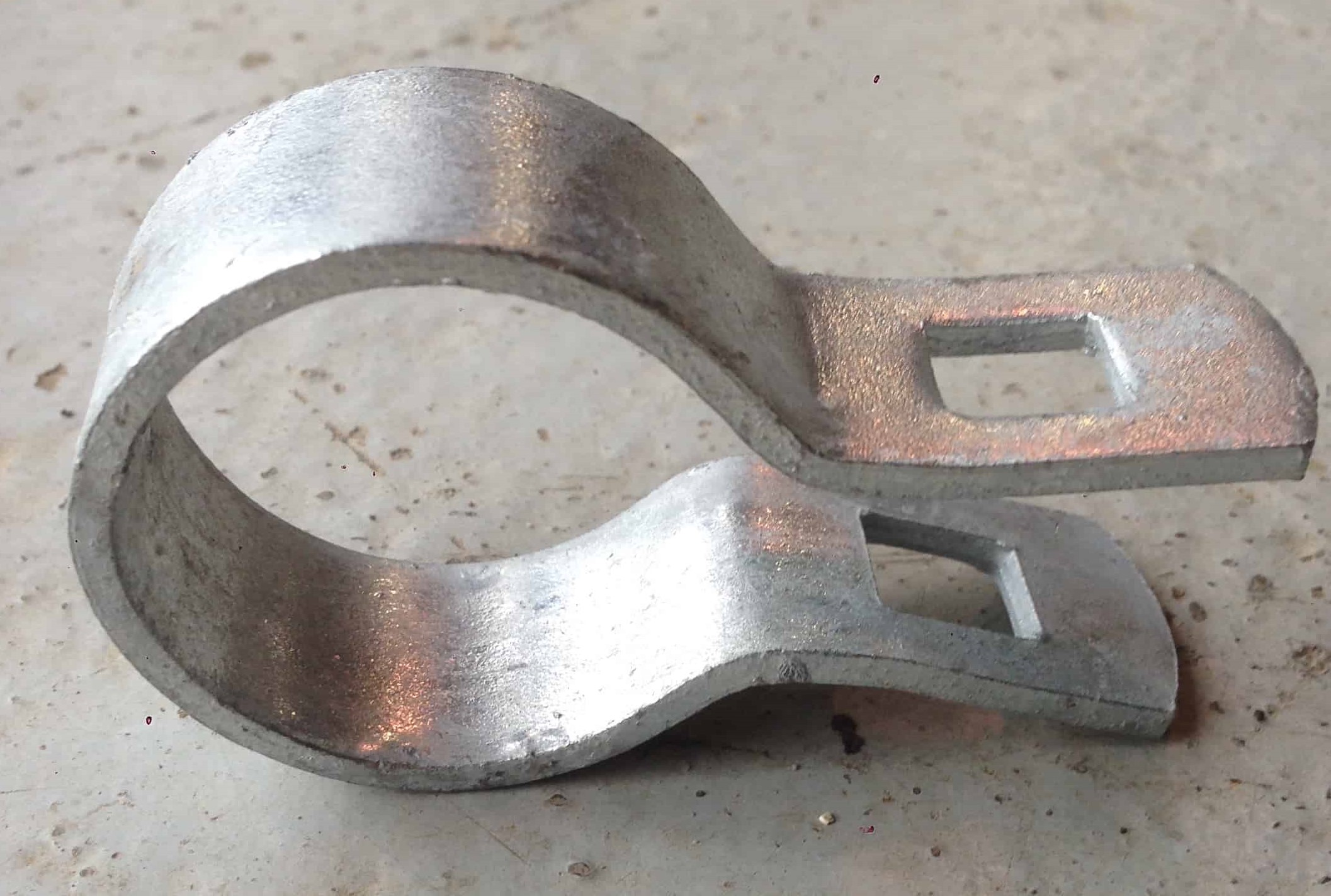
Brace bands line up perfectly with end-wall bracket connections, pressed steel cups, or ends of tube that have been flattened (pressed) and drilled, and allow for a sturdy bolt and nut connection.
Brace Bands for Square Tubing
If your bows/hoops are made of 2" x 2" square steel tubing the square brace band is going to be an essential part of your building process.
If your bows/hoops are comprised of round tubing you may still find a need for square steel tubing if your end-walls are made of 2" x 2" square steel.
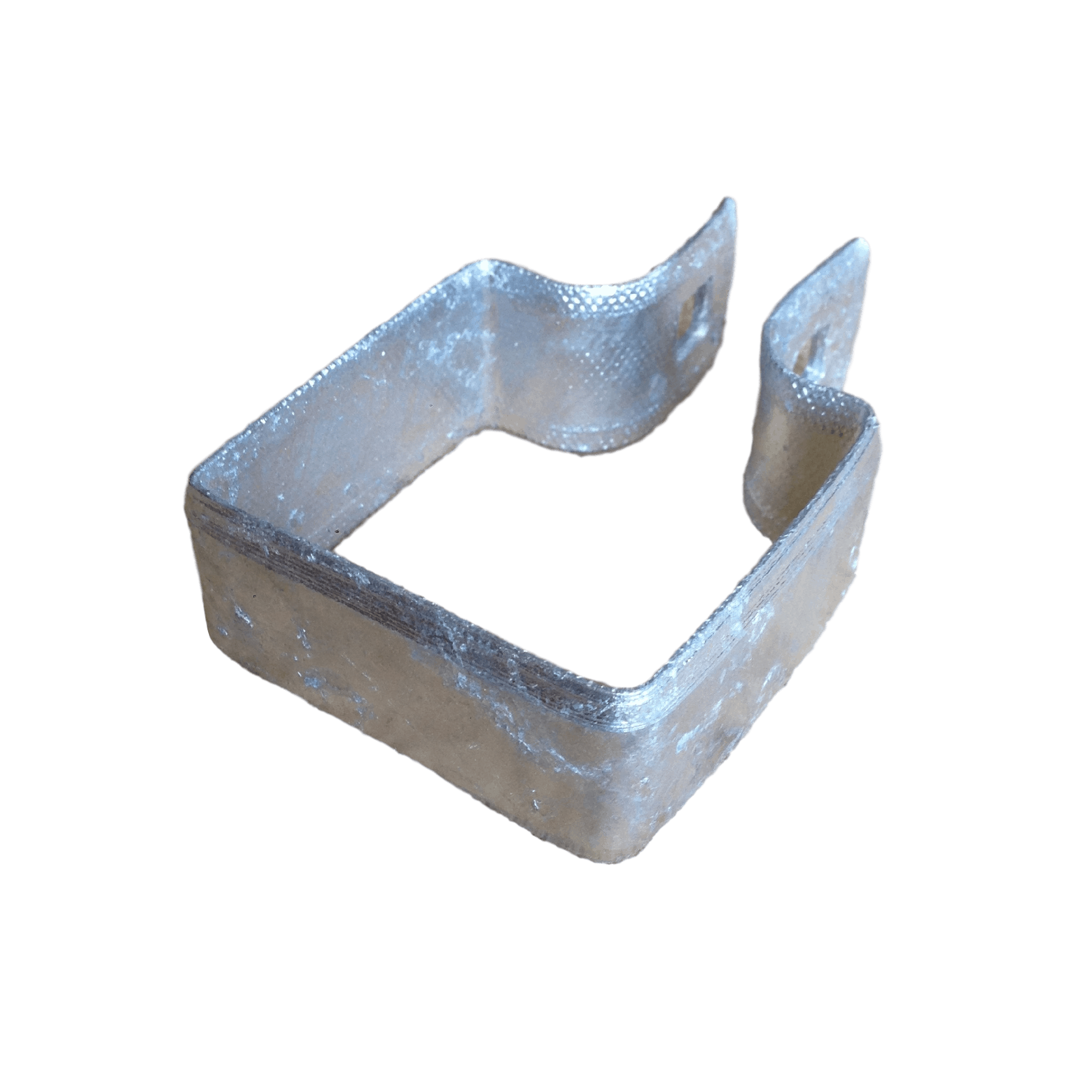
The square brace bands can be used in these cases if you plan on attaching a diagonal brace from a bow/hoop to your square end-wall tube.
3. Cross-Connector Purlin Clamps
Cross connectors are possibly the most commonly used hardware component for any greenhouse and high tunnel builder.
They are designed to easily and quickly attach two pieces of steel tube that are crossing perpendicularly.
You can see how these pieces of hardware developed their name... essentially, where two steel tubes cross you will be able to connect them together.
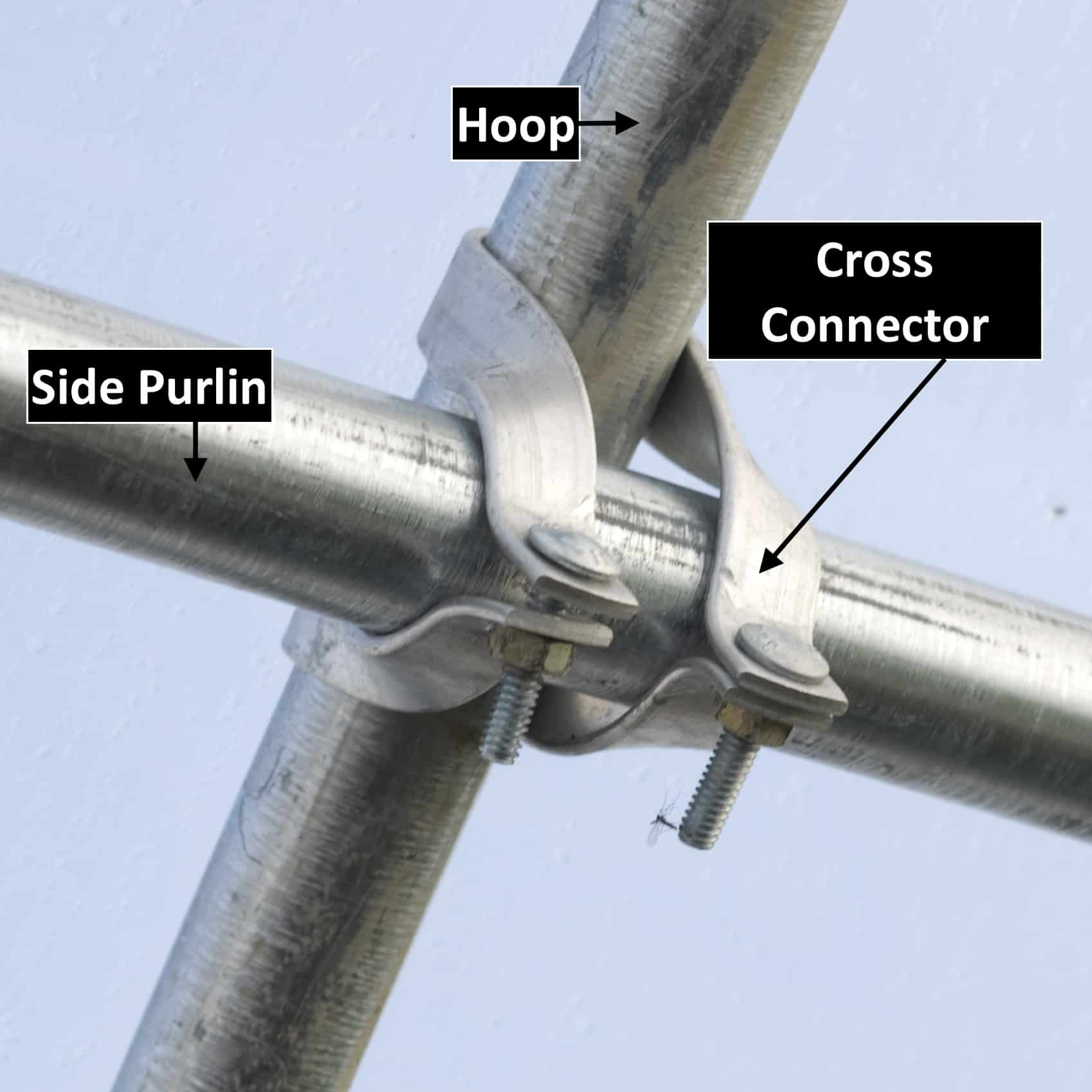
The tubing being connected with these units are often referred to as purlins... for this reason, these are sometimes referred to as purlin clamps. A purlin clamp, in a sense, would simply be anything that holds a purlin in place.
The biggest benefit of cross-connectors is they can be installed without a drill driver.
You can put the hardware onto the two pieces of crossing tube, and then finish the attachment process by tightening down the two nuts and bolts that come with the clamps.
4. Lock-Up Purlin Clamps
Although cross connectors are the most popular type of purlin clamps, there are other ways to connect perpendicular metal tubes. One of the other popular methods is with Lock-up Clamps.
These clamps do not require nuts and bolts. Instead, one part goes over top of the tubes, and the other is hammered into position on the underside to create a firm connection. Lock-ups come in various sizes and can be installed very fast.
In recent years, however, these clamps have become MUCH LESS readily available. So if you're looking to use a purlin clamp I would recommend defaulting to the Cross Connectors.
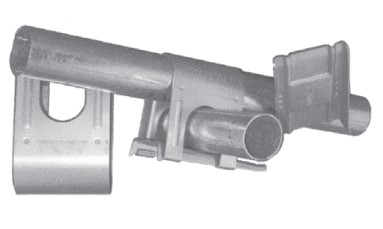
If you do use Lock-up Clamps it is recommended that you drive a single self tapping TEK screw through the underside of the plate and into the purlin itself .
5. Two-Hole Straps
Two-hole straps are an extremely versatile hardware option for greenhouse builders. Two-Hole straps are actually an economy version of the Cross-Connector and Lock-Up, because they can be used as a way to attach perpendicular steel tube.
In addition to connecting crossing tubes, two-hole straps can be used to attachDouble Aluminum Channel Hip-Rail to vertical Steel Tubing, as shown in the picture below.
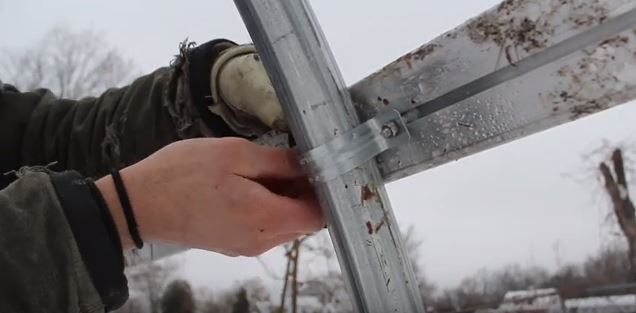
There are a few types of double aluminum channel, but the type with a slot through the full length of its backside works perfectly for two-hole straps.
Attach Lumber Hiprails and Baseboards to Bows/Hoops and Ground Posts
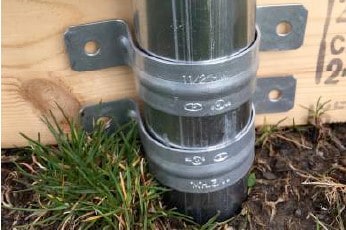
Two-hole straps are absolutely necessary for anyone using lumber for their hiprails and baseboards.
At each point lumber makes contact with a hoop or ground post, use one OR tWO two-hole straps to connect the lumber to the tunnel. You can keep the two-hole strap from shifting by driving a self tapping tek screw through the two-hole strap and into the steel tube.
The two-hole strap is such a versatile building component for greenhouses and hoop houses that there are likely other uses for these components not listed. You can check out the available tube diameters we carry and current pricing here: Two Hole Straps.
6. Greenhouse Plastic Attachment
If you are building a high tunnel, hoop house, or greenhouse the attachment of plastic should be at the front of your plans.
There are various ways to attach greenhouse plastic to your high tunnel, and we cover those in a separate post. For actually attaching the plastic, below are the hardware components you should use
Single Aluminum Channel
Single aluminum channel is attached over the top of your end-bows. This channel is also used on the front face of your structure at ground level, and around door and vent frames.
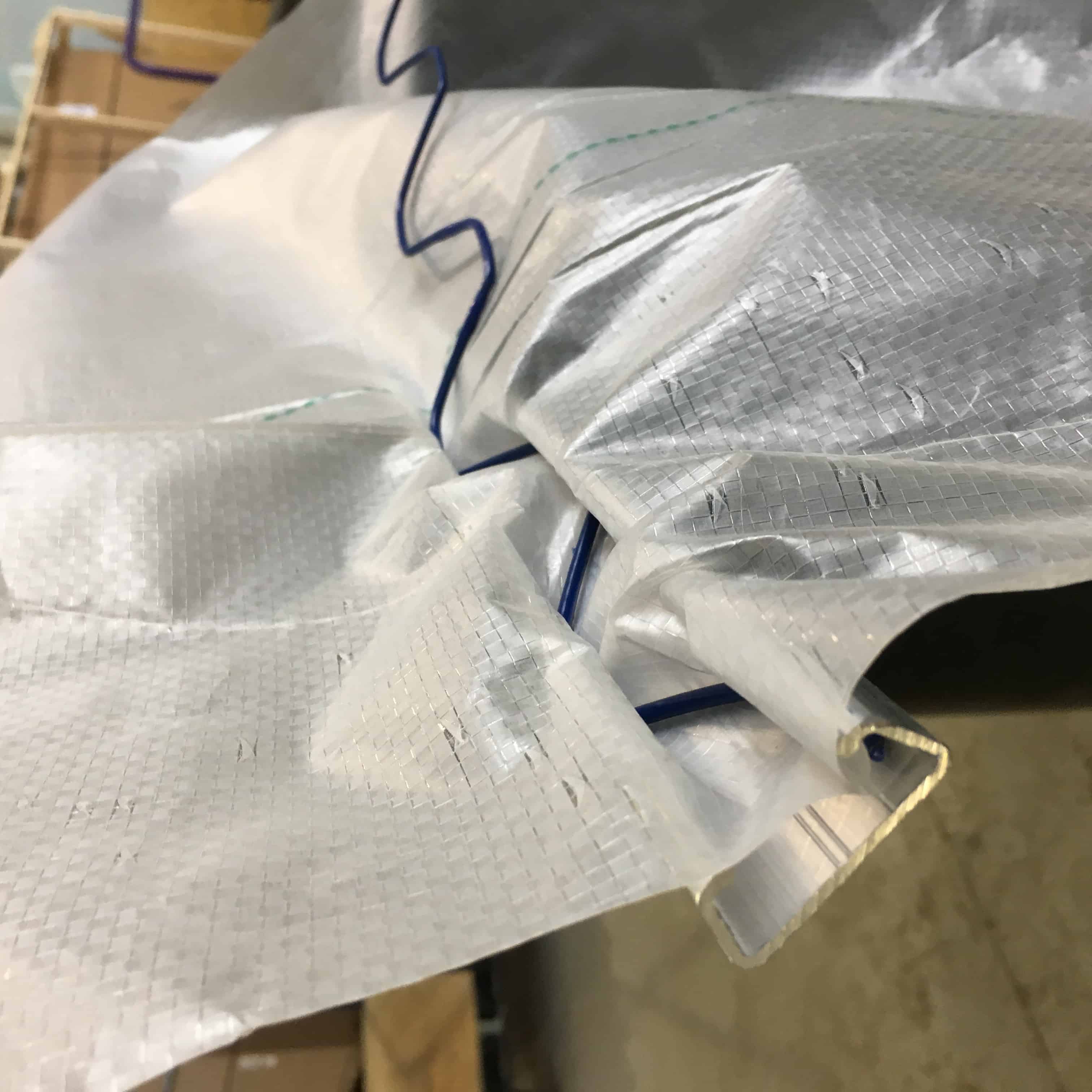
If you are not going to have roll-up sides you can secure this channel directly to your baseboard the full length of your structure on each side. This channel will provide a tight seal anywhere it is used.
Double Aluminum Channel
Double aluminum channel is used as a metal hip-rail. This means you can use this hardware component to completely replace the lumber you may have used in its absence. Double aluminum channel is what the sides of your top cover will attach to when you have roll-up sides.
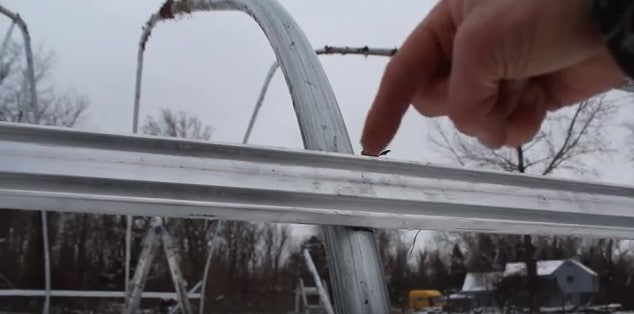
One of the main benefits of this type of hardware is it allows you to more easily replace your roll-up sides if they get damaged for any reason. It is also beneficial to have double aluminum channel when you are planning on installing a double layer inflated greenhouse plastic system.
Snap Clamps
Snap clamps are a great way to attach plastic directly to a metal tube when spring wire channel is not an option.
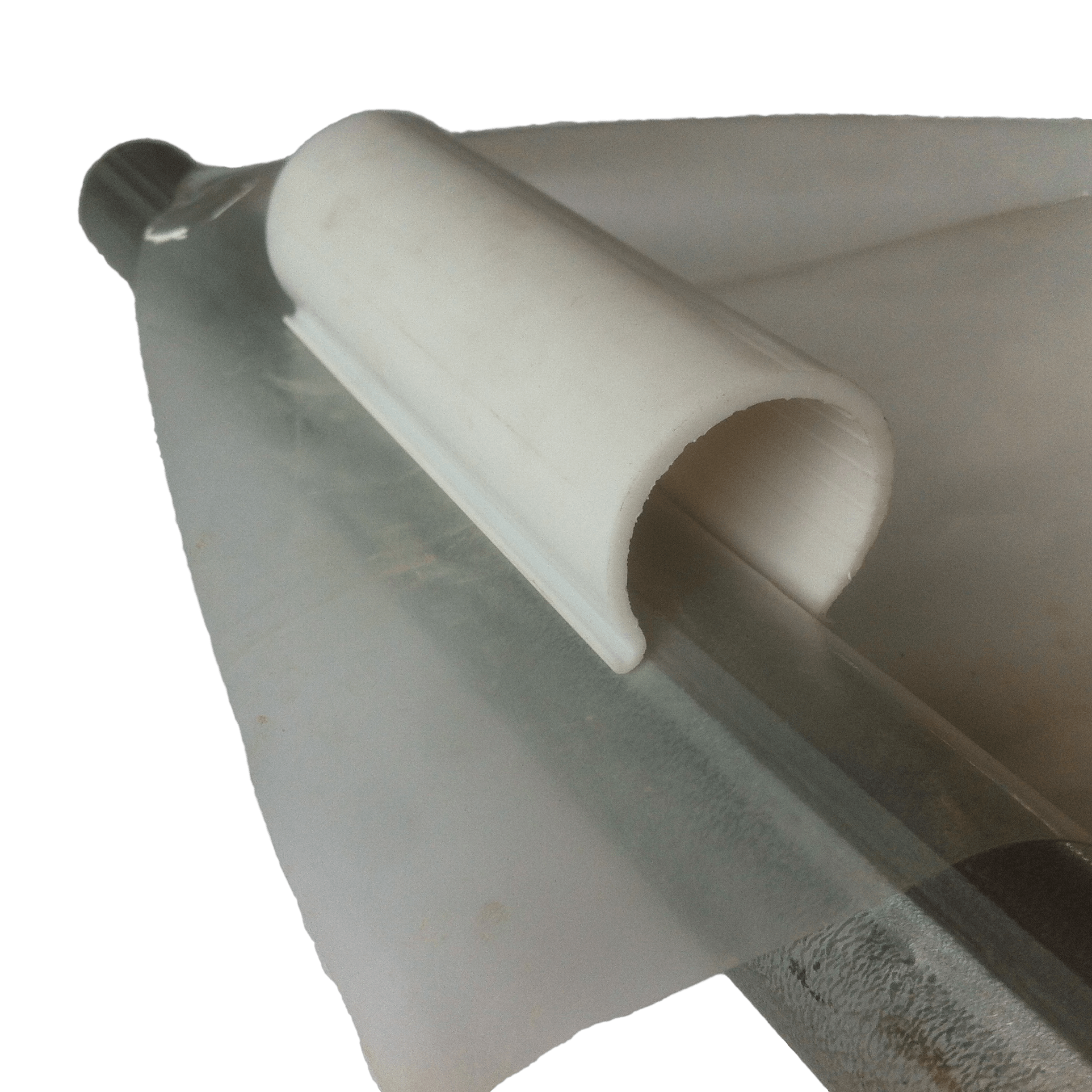
While Snap Clamps hold plastic well, it would not be a recommended attachment method for the entire structure since it does not provide the same strength that single or double aluminum channel supply. Snap clamps are instead best used as the method for attaching greenhouse plastic to a roll-up side tube. We have a post that focuses specifically on installing roll-up sides using this clamps. You can check that out here: Greenhouse Roll-up Sides | Benefits, Hardware, Installation. You can also check out current pictures, specs, and pricing of our Snap Clamps here: Snap Clamps.
7. End-Wall Connection Hardware
Whether building your end-wall out of lumber of steel, you will definitely need a way to attach framing to your end-bows. Here are a few vital building components for you to consider.
Twist Plates
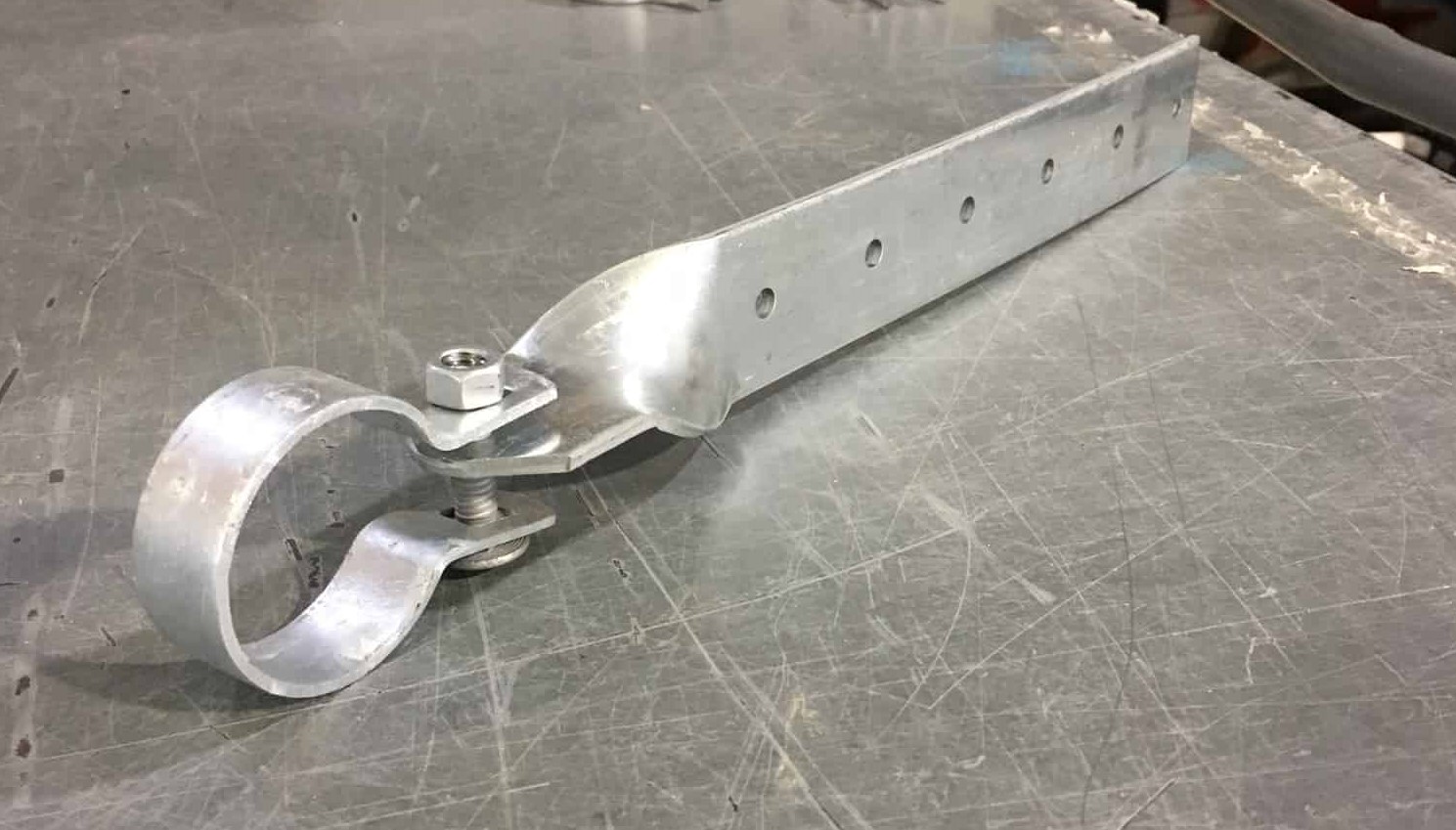
Twist plates work great with pretty much any type of lumber or steel square tubing. One side of the fitting is flat and is attached directly to the side of studs or horizontal members. The other end of the fitting twists to provide a hole that lines up perfectly with a brace band.
Lumber End-Wall Bracket Assemblies
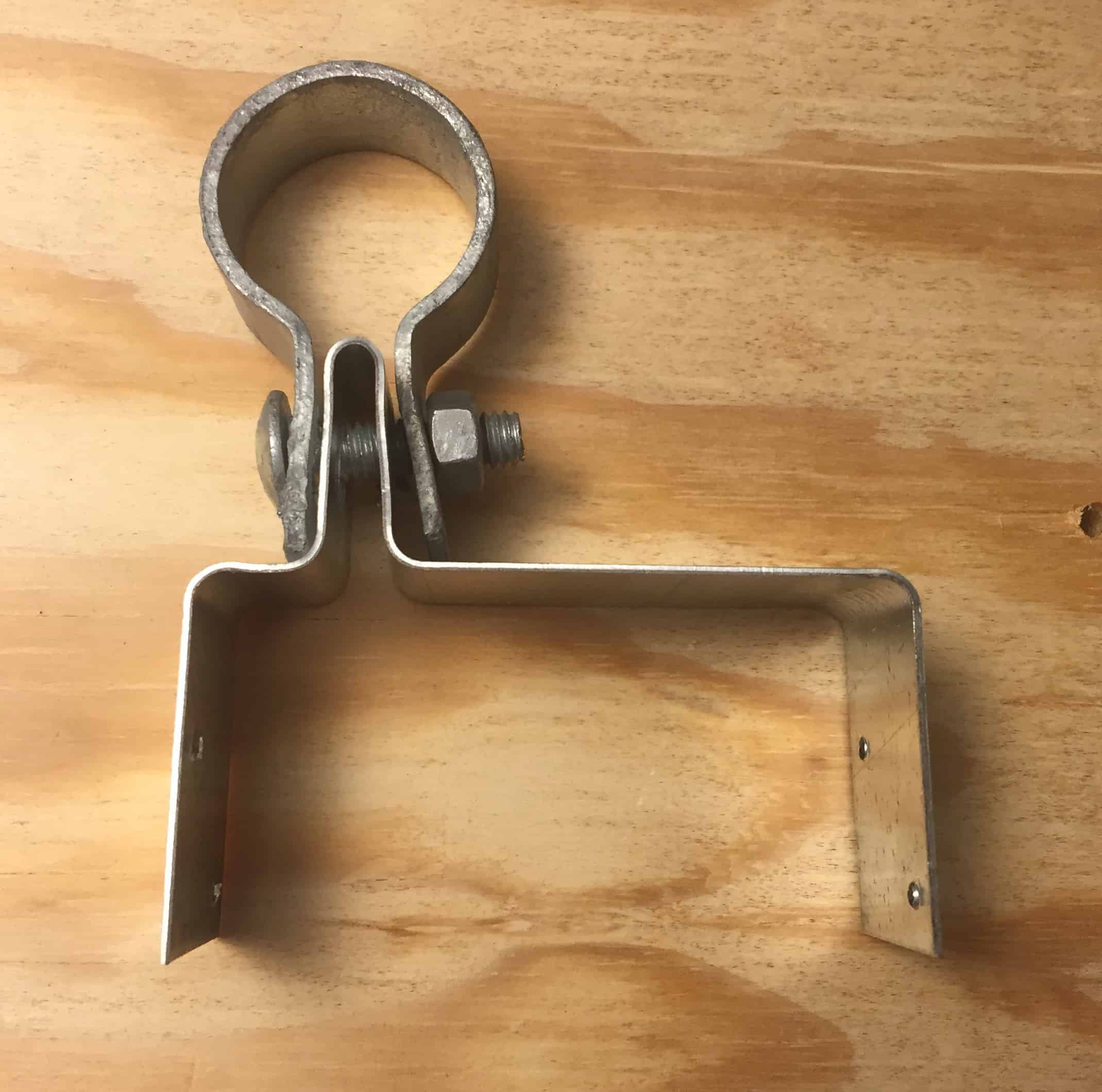
These pieces of hardware (2x4 Lumber Bracket Assembly) are intended only for attachment to the end of lumber 2x4s or 4x4s. The benefit of these units is they connect to the top of lumber framing components very firmly. The hole in the bracket then lines up perfectly with a brace band, nut, and bolt.
Steel End-Wall Bracket Assemblies
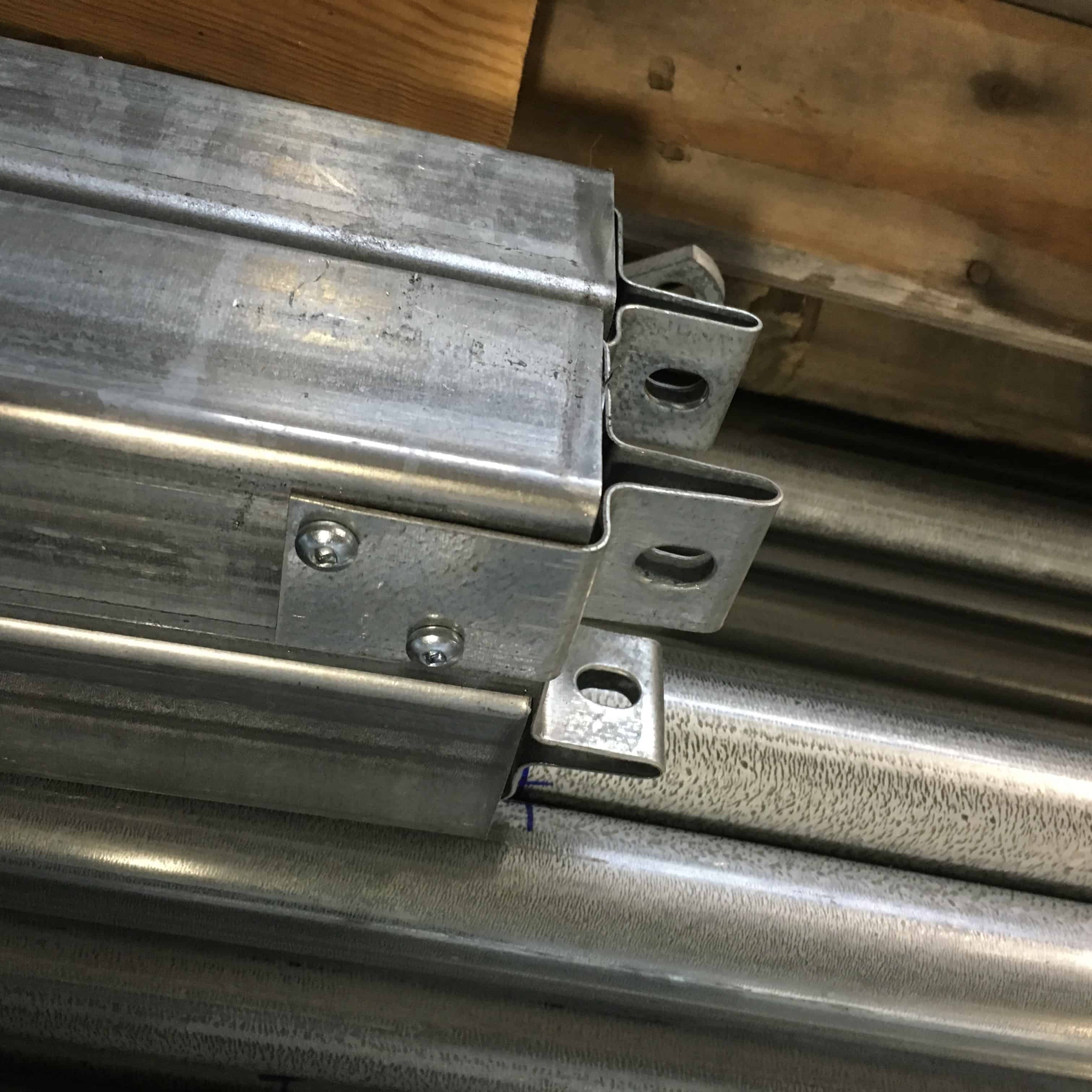
Like the lumber end-wall brackets, the steel bracket assemblies are designed to firmly attach to the end of square steel tubing at one of its ends. Pre-drilled holes in the bracket receive self tapping TEK screws, and the hole in the bracket can line up with brace bands on the hoop.
8. Greenhouse Plastic
Every high tunnel, hoop house, or greenhouse will need to be covered with something. Below are some of the best options for covering your high tunnel.
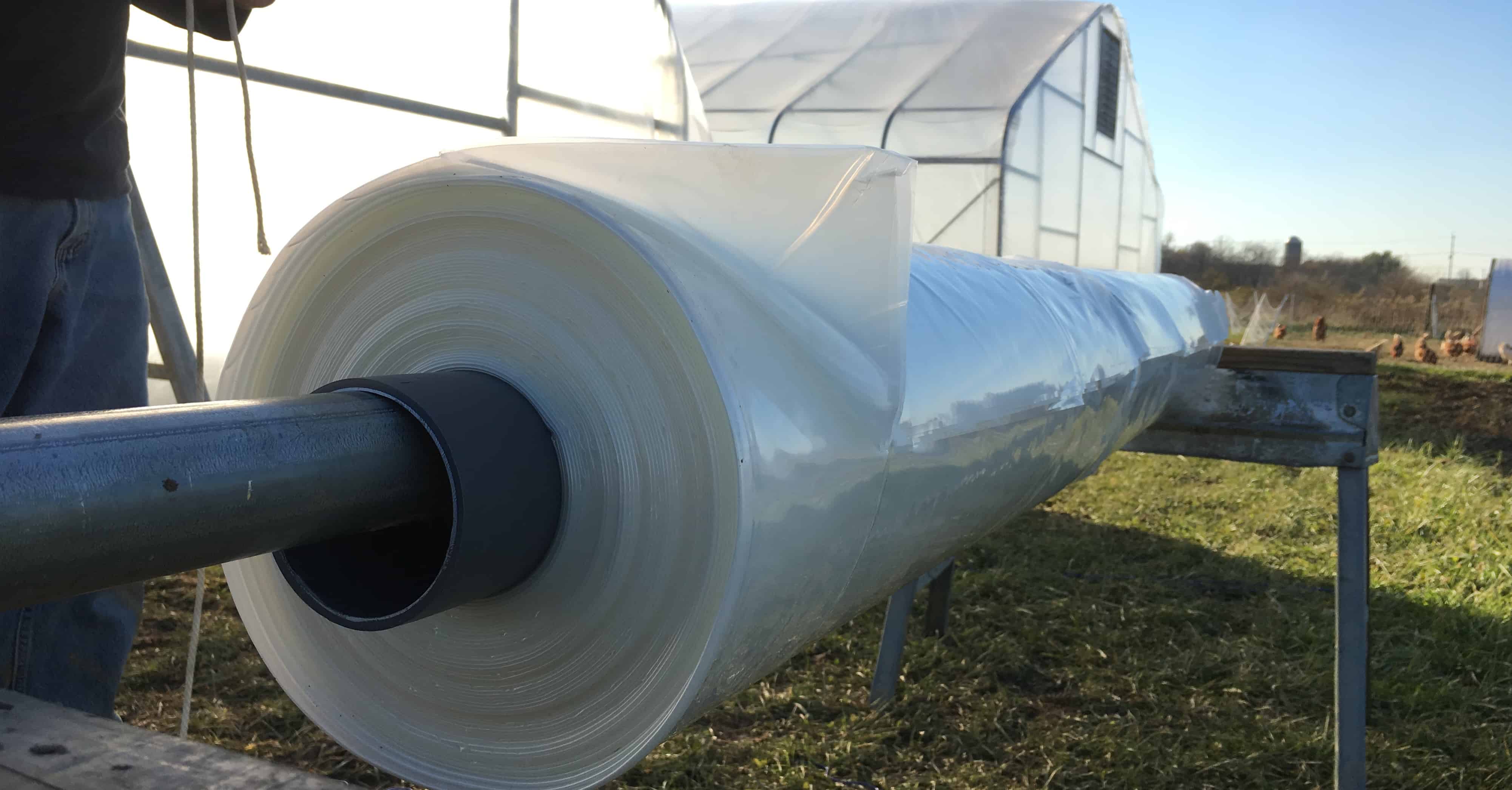
4 Year 6 mil UVA Clear
4 Year 6 mil UVA Clear Greenhouse Plastic is the industry standard for greenhouse plastic and is the most affordable plastic covering that can last 4 years (sometimes more). One of the main benefits of this greenhouse plastic is the way it is folded. Arriving with a gusset fold, all of these sheets of plastic will arrive on an easy to manage roll of plastic; even the 54 ft. wide sheets of plastic are folded onto a roll less than 8 ft. in length.
4 Year 6 mil IRAD Anti-Drip
This greenhouse plastic is very similar to the UVA Clear material, but it does have a few additional properties that provide additional benefit. Primarily, this product has properties that trap Infrared light to reduce heat loss, as well as a coating added during manufacturing that reduces dripping as interior humidity rises. This is a big deal when you consider disease and fungal issues often are due to issues with too much water.
4 Year 6 mil IRAD Greenhouse Plastic is folded in the same way as the UVA Clear, which makes it easy to handle. While the plastic has a few benefits that the UVA Clear plastic lacks it is only about a penny more costly per square ft. You can check out all of the specs and current pricing for the IRAD Plastic here: 4 year 6 mil IRAD Greenhouse Plastic.
Woven 9 mil Plastic Covering
For those wanting a greenhouse plastic with a little bit more durability, 9 mil woven greenhouse plastic is a great option. Woven poly can withstand heavy snow and wind loads,resist tearing and gouging, and has a high diffused light percentage. Many people decide to install this plastic as their end-wall covering because end-walls get particularly beat-up. Since this material can be custom cut to nearly any size, it becomes relatively simple to get this plastic for end-walls and then install an IRAD or UVA clear covering for the top.
9. Inflation Fan for Double Layer Plastic
It is difficult to bring up plastic for greenhouses without bringing up using a double layer of plastic. If you plan on having two layers of plastic you will need to use an Inflation Fan to shoot air in between the layers of plastic.
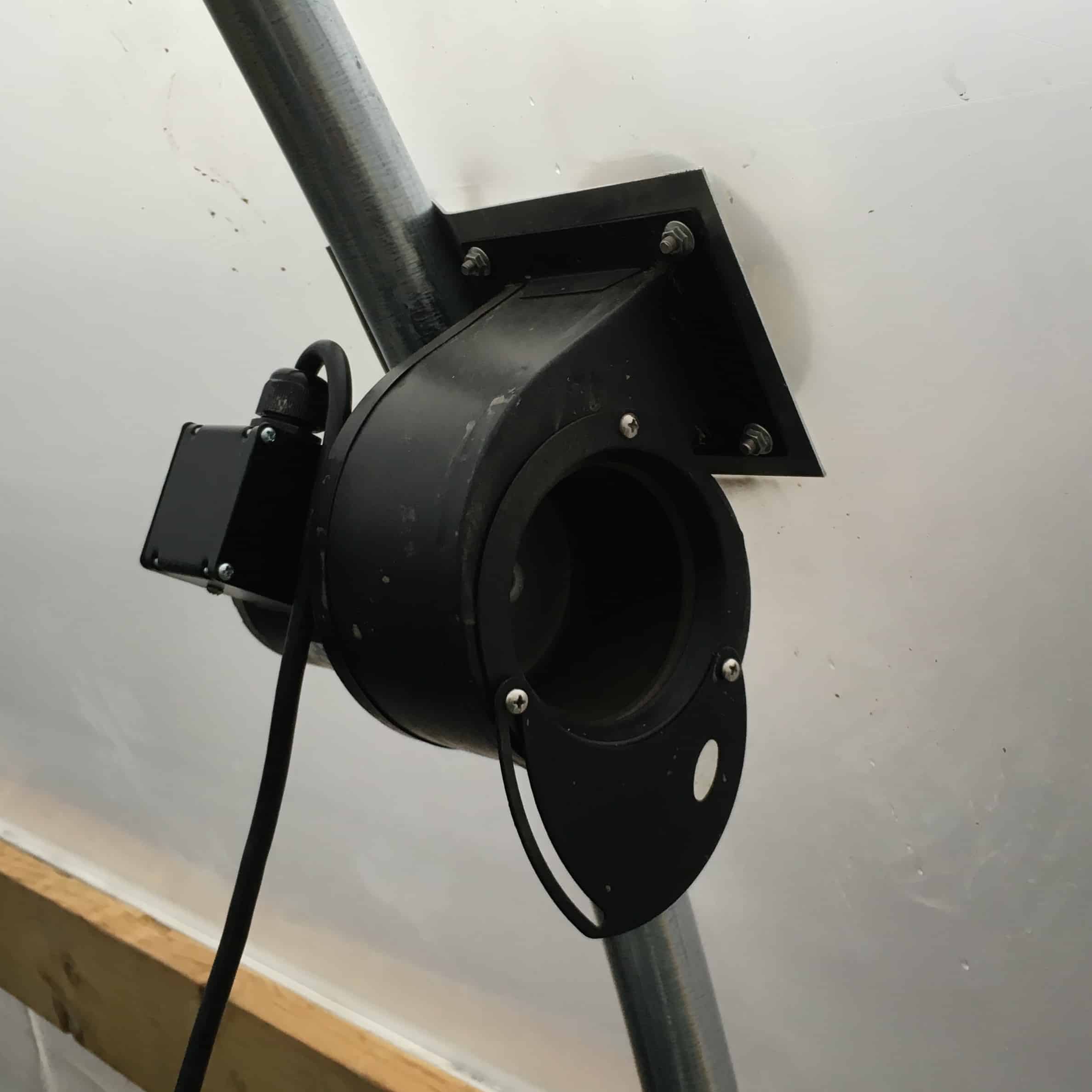
Using two layers of plastic and inflating the air between the plastic layers is the best way to increase the R-Value of your covering, fight snow build up, help deflect wind, and more. You can read more about double layer systems in our post, Why Install a Double Layer Inflation System for Your Greenhouse. You can also check out the specs and current pricing for two different inflation fans here: Greenhouse Inflation Fan.
10. Roll-up Side Hardware
Climate control becomes increasingly important for any covered growing system, as high temperatures, spikes in humidity, water retention, and more can become issues. Installing roll-up sides for your structure is likely the lowest cost option to efficiently vent your structure and control interior air temperatures. Below are the main hardware components you will need to install roll-up sides.
Roll-up Side Operators
There are a ton of different roll-up side operators on the market. Below we provide a list of the most popular operator packages.
Gearbox Operator
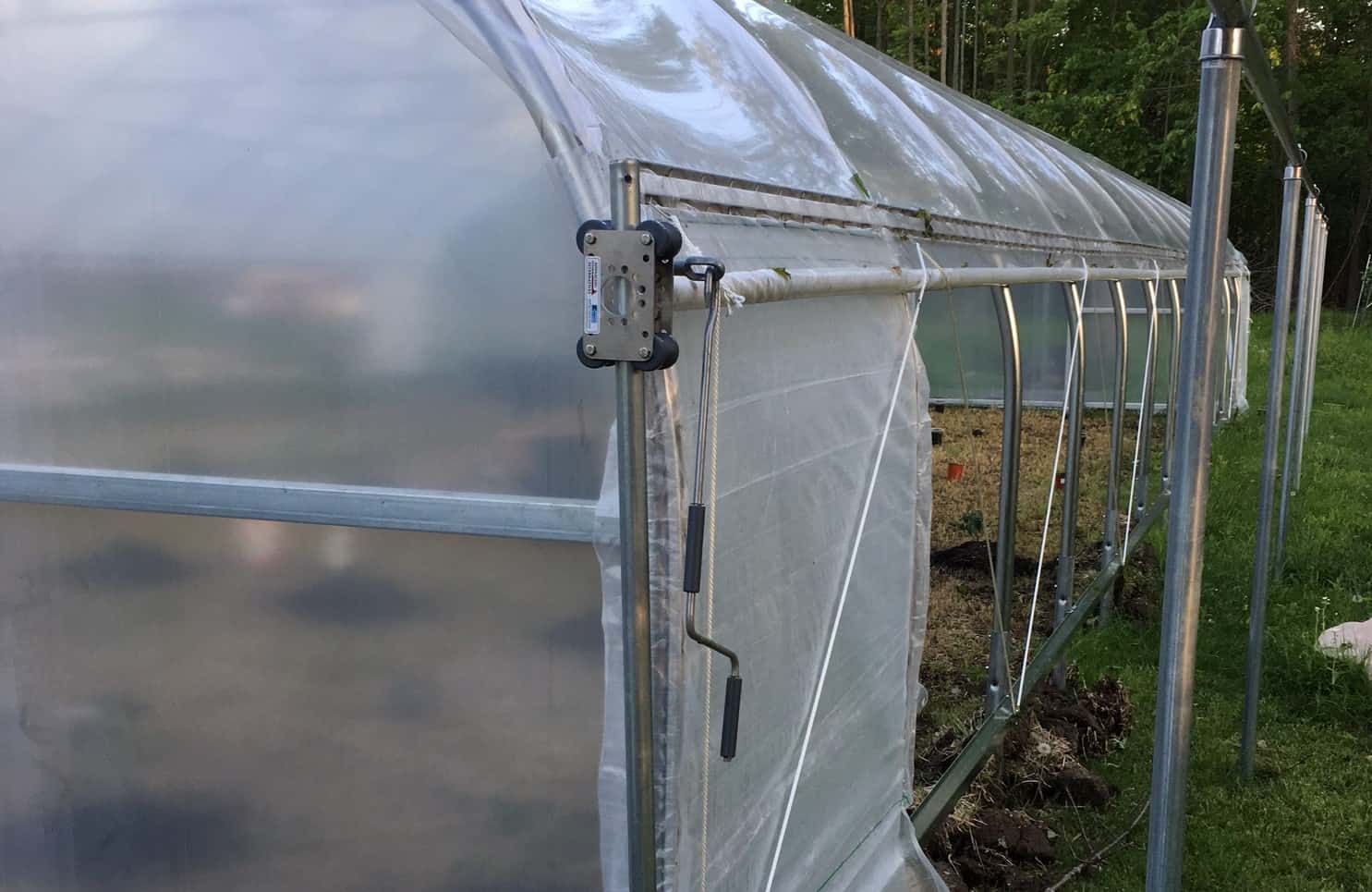
Gearboxes are great because they have an internal brake that prevents them from un-rolling on you, and they also transfer the weight of your roll-up bar into the gearbox so the actual act of rolling the sides up is easier.
Universal Joint Handles
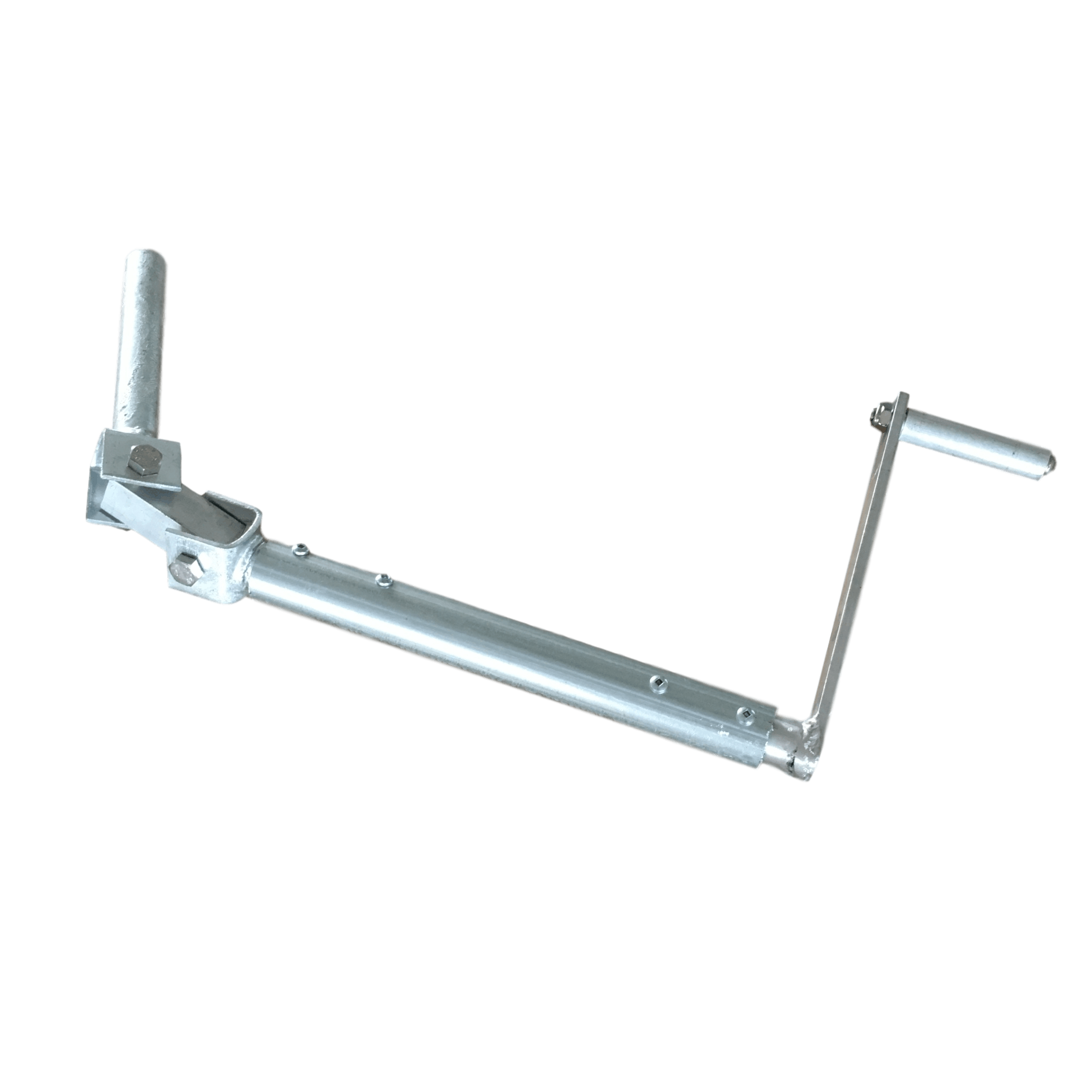
These handles are our mid-range handle option. They are called Universal Joint Handles because they have a joint that makes rolling easier and allows them to bend out of the way when they are on the ground.
The joint also allows them hook onto a rope tie-off system when the sides are rolled up.
Simple Handles
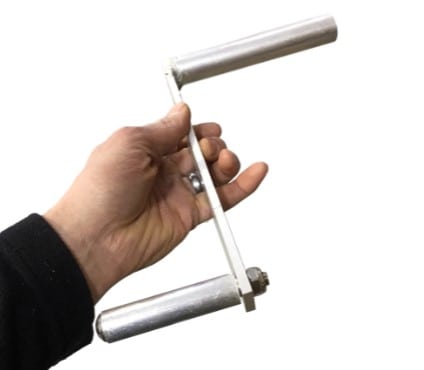
These are some of the lowest cost handles and are perfect for anyone building a high tunnel or hoop house on a budget.
Simply insert one end into a roll-up tube and attach it with self tapping TEK screws and you are ready to crank up your sides.
Snap Clamps
With out a doubt, snap clamps are the best low-cost option for attaching greenhouse plastic to your roll-up side bar.
Anti-Billow Rope Hardware
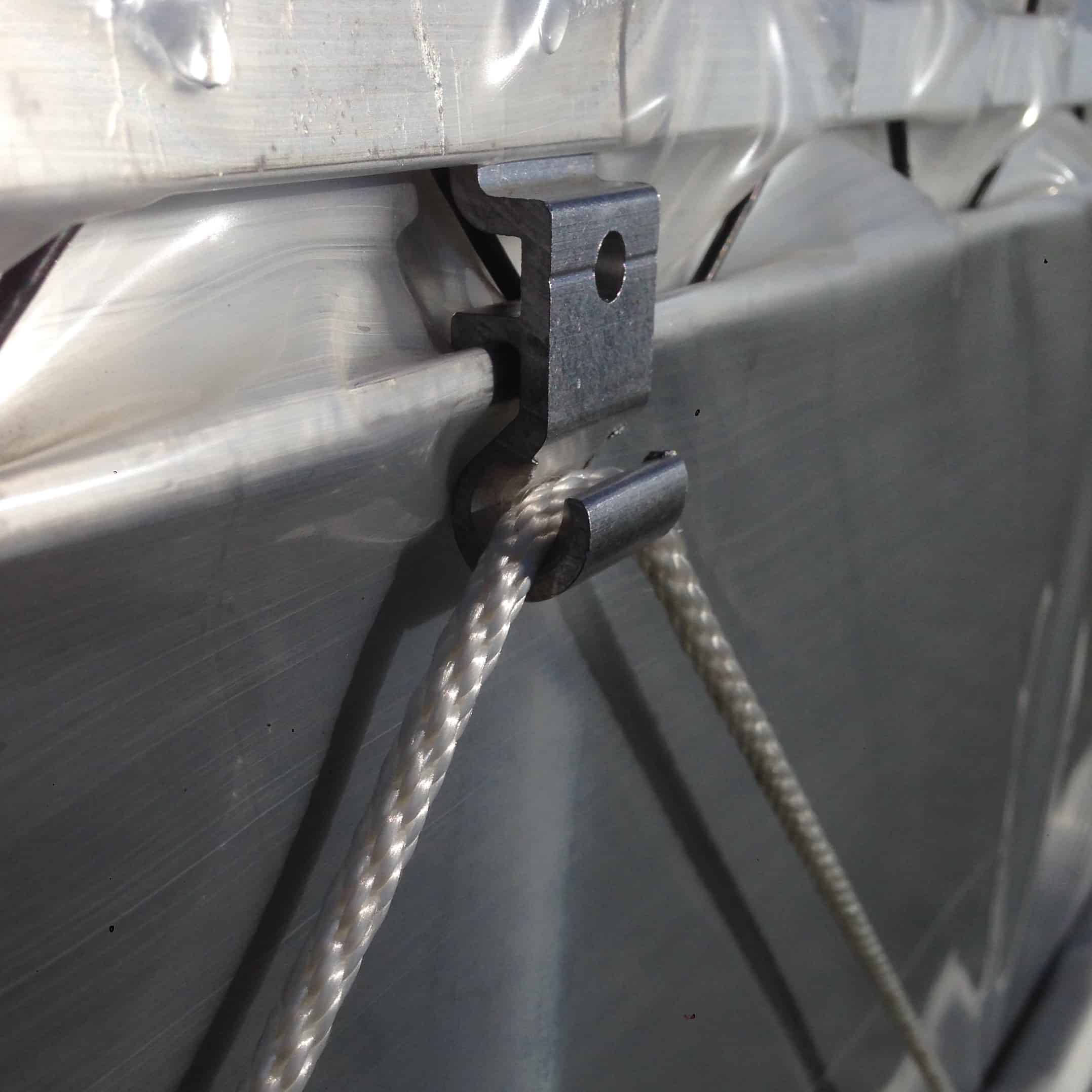
Any roll-up side is best designed so it won't flop around in the wind. The standard anti-billow hardware components you would need to keep your roll-up sides firmly against the side of your house are 1/4 diameter rope and EZ Snap Hooks.
EZ Snap Hooks can bolt to lumber or steel, and they are designed to fit directly into single or double aluminum channel.
Planning Your Greenhouse Build
Regardless of how large or small your greenhouse or high tunnel will be, it is important to start considering what you will use for the build. Hopefully the list of building components outlined in this post can help you put together a highly functional structure.
If piecing together everything you need to for build is daunting you aren't alone. It should be stated that buying a pre-fabricated DIY Kit is still the best way to ensure you have all of the best components and features as a part of your structure. If you are interested in getting some pricing on DIY Kit options you can check out the variety of sizes available here: High Tunnel DIY Kits.
RELATED POSTS:
- 3 Best Backyard Greenhouses
- 4 Ways to Attach Greenhouse Plastic to a Metal Frame
- Best Greenhouse Plastics | Comparing Based on Experience
- How to Install Roll-up Sides on a High Tunnel
- How to Install Top Cover Greenhouse Plastic
- Best Shade Cloth for Tomato Production
